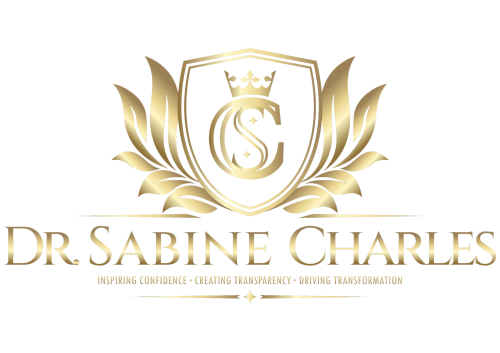Building Resilience and Agility in Leadership: How Organizations can Survive and Adapt during Change Processes
Uncertainty and rapid change are characteristic features of the modern business world, and thus, flexibility and the ability to adapt have emerged as critical leadership skills. Those organizations that can handle disruption and continue with the essence of an organization have better chances of thriving in the future (Holbeche, 2023). Managers, therefore, need to identify ways and means through which stability can be afforded to organizations and, more importantly, the members of those organizations to guarantee the ability of these organizations to be able to adapt to these challenges continuously. Following the words of Charles (2024), it is crucial to underline that resilience is not only the ability to stay afloat but to turn better after the storm.
Toughness or tenacity, which is one aspect of resilience, is the ability of a leader to remain steadfast and strong in the face of a challenge. Whether they are facing economic problems, market changes, or company problems, strong leaders ensure their employees remain calm and know exactly what they must do. One particular strategy involving developing ability is the development of a growth mindset. Managers who follow such thinking patterns favor risks and consider them a way of growth, not failure. This approach makes leaders and their teams adaptive since they will continue improving and learning. Deep (2023) also notes that a growth mindset encourages leadership and business resilience.
Developing Agility in Decision-Making
Building flexibility into decision-making processes is a core leadership skill within dynamic and unpredictable commercial environments. Leaders must have the skills to make sound and effective decisions quickly concerning the organizations' goals, especially in situations where the environment is dynamic or packed with uncertainties (Vera et al., 2020). Flexibility entails measuring prospective threats, comparing different choices, and adjusting course as needed so that the organization can remain well-aligned with its objectives even if it is confronted with challenges or needs to change direction.
Another essential characteristic of leaders in the Agile environment is that they have to be decisive and, at the same time, willing to experiment. This independence also allows them to adapt to the changing market situations, customer needs, and trends in the industry. Charles (2024) argues that a leadership style that is especially valuable in these times is that of agility.' Thus, by promoting flexibility, agile leaders guarantee that teams stay aligned with critical long-term objectives while possessing the ability to modify their approaches and processes when necessary. This balance is essential to maintain the long-term viability and strength of the organization.
Building Strong Relationships
Developing good internal relations is one of the primary ways organizations can strengthen their resilience, as relationships define the foundation of cooperation through the most challenging times within an organization. Managers who invest time and energy into establishing good interpersonal relationships in the workplace make sure employees are well cared for, appreciated, and connected even during turbulent times for the company (Kumkale, 2022). In transition periods, it is essential as it enables people to develop and maintain a solid frame of reference.
Credibility is critical in creating trust within a team; one way is through the flow of information. Employees must believe their concerns, ideas, or frustrations can be revealed without implication or penalty (Deep, 2023). Managers who encourage feedback and discussions show concern for the psychological prosperity of the groups and individuals they lead. This lenience leads to better cooperation and conflict management because people are more likely to share ideas and get involved when they feel listened to.
Listening with empathy is crucial for leadership because it helps to build trust and establish effective communication. Managers who involve their subordinates, listen to them, and express empathy contribute to creating psychological safety. Charles (2024) outlines that emotionally intelligent leaders focus on developing these lasting relationships so that their staff remains productive, interested, and strong despite challenges. This feeling of support empowers a worker to stay more on track and perform duties that enhance an organization or company during problematic stages.
Building a more resilient culture
Developing organizational resilience does not simply entail strengthening the individual but building up a characteristic central to the social functioning of teams and organizations. Leaders must institutionalize the concepts of protection and recovery at their workplaces and support culture change that encompasses values like elasticity, adaptiveness, and constant enhancement (Kumkale, 2022). This implies having a culture that fosters risk-taking and forgetting failures as long as they are researching new things. When implemented by leaders, such a mindset helps the team prepare and cope with unexpected incidents that may slow down the organization's pace.
Having a resilient culture ensures that employees feel allowed to deal with an uncertain situation because they have the backing of their employers. This fosters creativity since individuals can try new options, knowing that poor performance will not be penalized. Vera et al. (2020) state that resilient organizations can endure adverse times and sustain their technical capability and strategic mission. This way, leaders ensure that their teams are ready to minimize disruptions and enhance adaptability: growing, developing, and improving with every interruption.
Conclusion
In conclusion, it is essential to note that leadership resilience and agility must be established as critical factors enabling leaders to counter the challenges the environment presents to today’s organization. Those leaders who promote growth, encourage fast decision-making, and rely more on trustful relations with employees are more prepared to deal with the situations and the necessity of the change. On this basis, leaders can cultivate positive learning in their organizations to guarantee that organizations are future-proofed and pose significant competitive advantages. As Dr. Sabine Charles explains, resilience does not mean sustaining through disruption; it means turning disruption into an asset. Since this reshaping and reconstruction of the future into the present is done proactively, organizations can adapt to the future when it is most uncertain and convert what may likely be future pitfalls into the building blocks of organizations that are sustainable in the future.
References
Charles, S. (2024a). Dr. Sabine Charles. Dr. Sabine Charles. http://drsabinecharles.com
Deep, G. (2023). The power of resilience and flexibility in business leadership: Adapting to change. Magna Scientia Advanced Research and Reviews, 9(2), 086-091. https://doi.org/10.30574/msarr.2023.9.2.0164
Holbeche, L. (2023). The agile organization: how to build an engaged, innovative, and resilient business. Kogan Page Publishers.
Kumkale, İ. (2022). Organizational Agility. In Organizational Mastery: The Impact of Strategic Leadership and Organizational Ambidexterity on Organizational Agility (pp. 37-52). Singapore: Springer Nature Singapore. https://link.springer.com/chapter/10.1007/978-981-16-7582-9_3
Vera, D., Samba, C., Kong, D. T., & Maldonado, T. (2020). Resilience as thriving: The role of positive leadership practices. Organizational dynamics. https://doi.org/10.1016%2Fj.orgdyn.2020.100784

